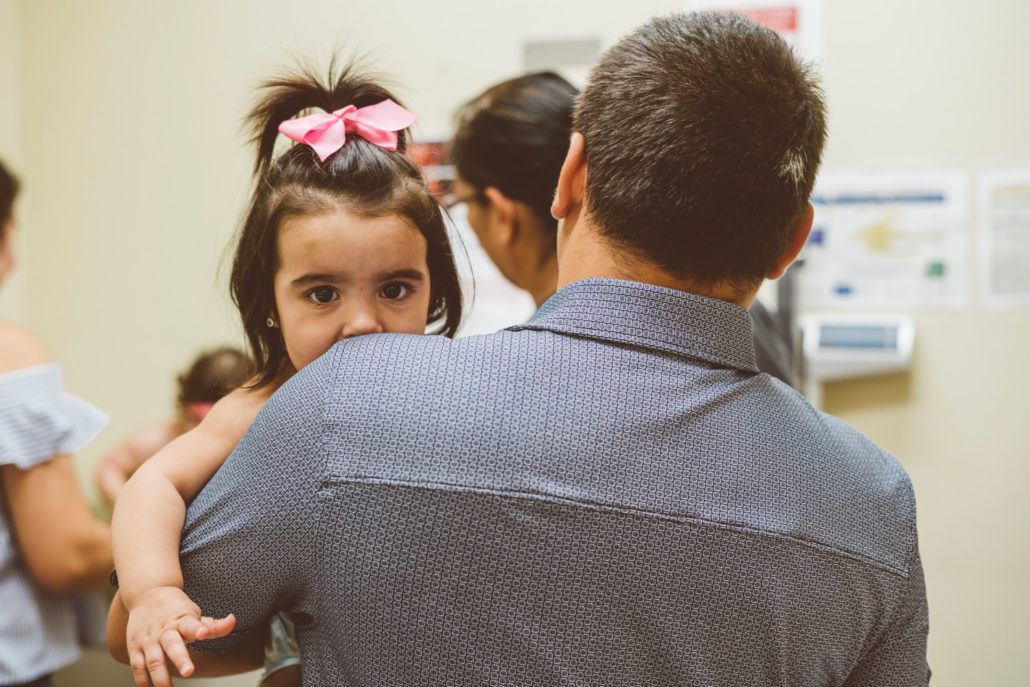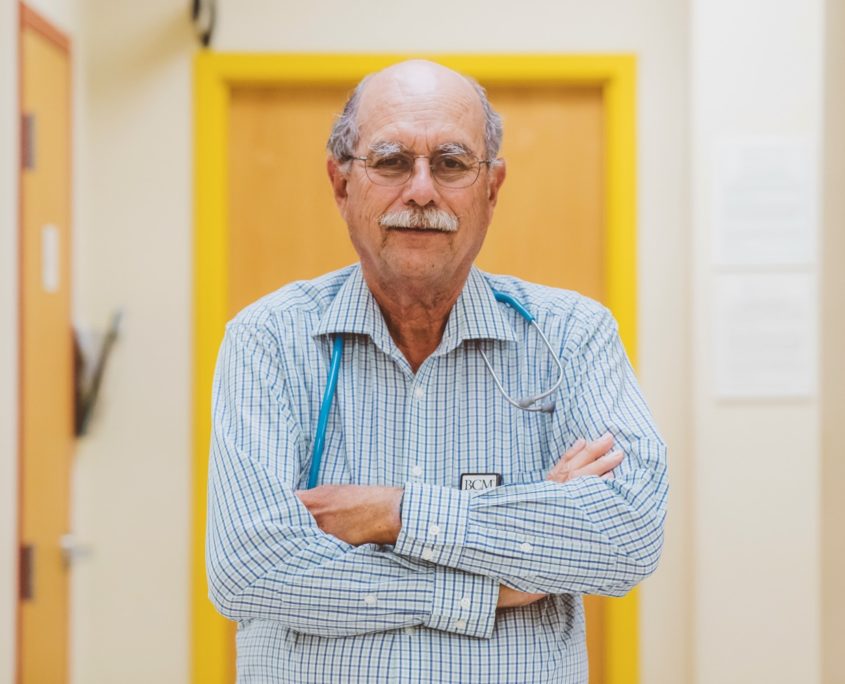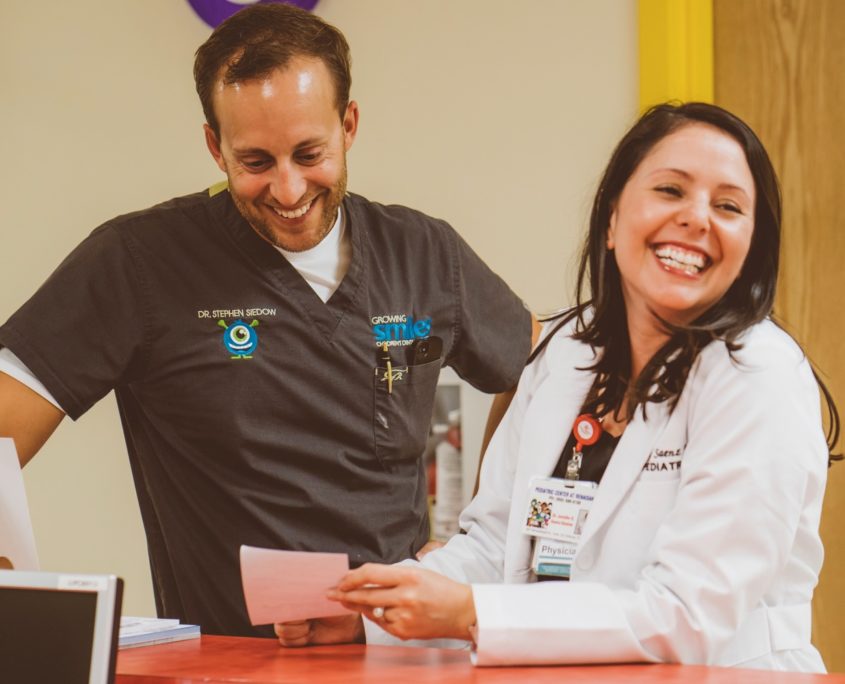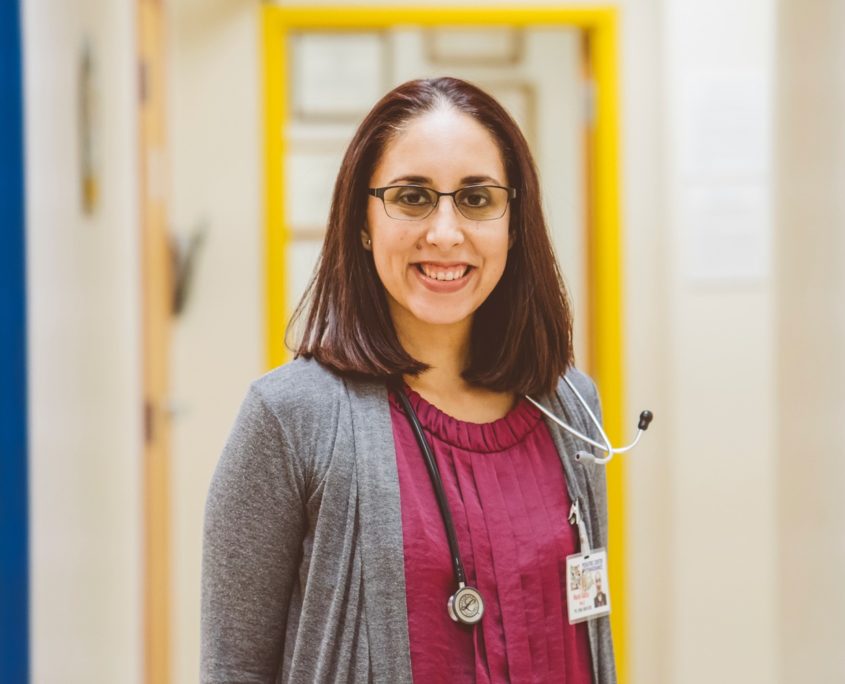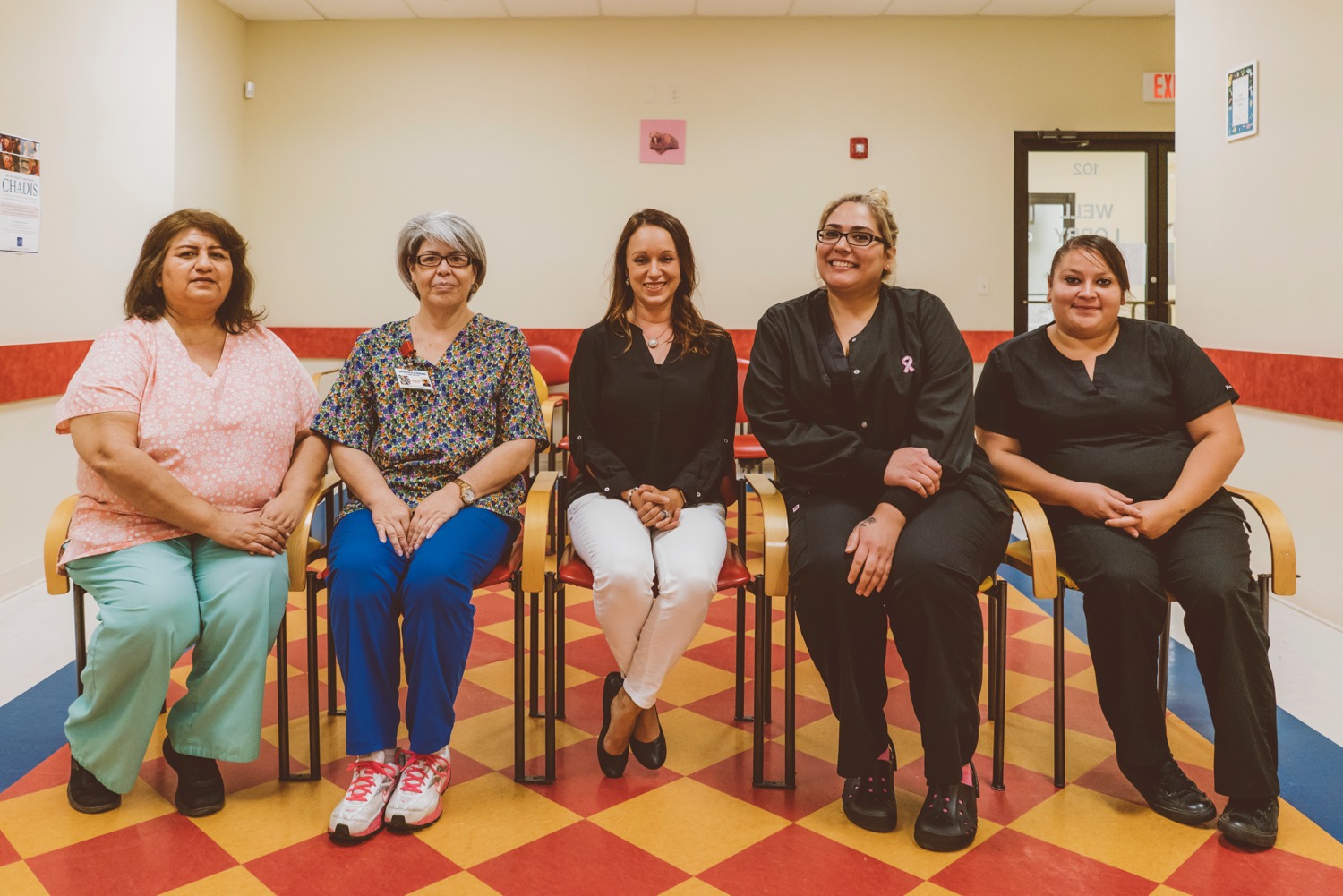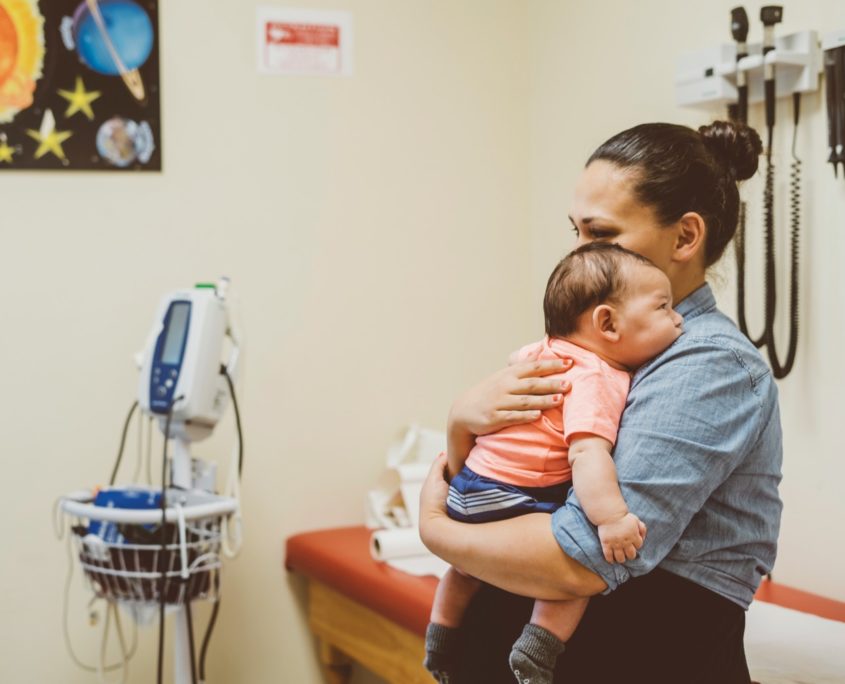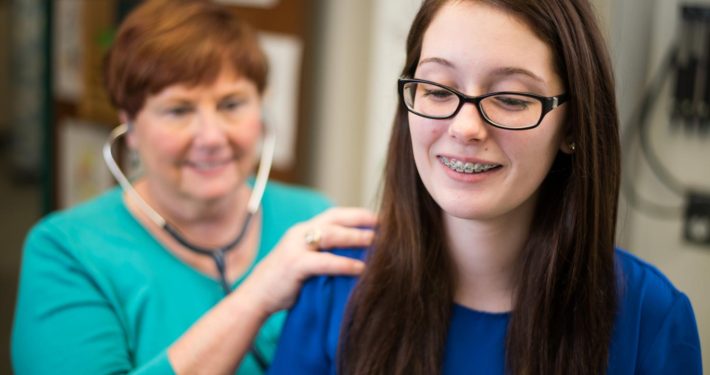Family, Community, Country: The Power of Patient-Centered Pediatrics in South Texas
A family practice in South Texas tells the story of their journey to becoming a cornerstone of their community.
It’s hardly surprising that pediatrician Dr. J.J. Saenz has little downtime in his work days. He has been practicing in the Rio Grande Valley for over 30 years, and in the process has cultivated a loyal patient community. “I’m currently seeing grandkids of my original patients,” Dr. Saenz says. “I’m almost 70, and I love what I do.”
Dr. Saenz and his family operate a small pediatric practice in Edinburg, Texas, located in the Rio Grande Valley just 15 miles north of the U.S.-Mexico border. On the open plains of South Texas, cattle ranches share space with immigration checkpoints, and generational Texas families live alongside recent migrants. The sociopolitical climate is as unforgiving as the South Texas sun; stories about increasing deportations frighten immigrant families, and they are reticent to leave their homes in daylight hours for fear of encountering border patrol. Of course, these families are also staying indoors during the hours when their health care providers are open. As patient volume drops, Dr. Saenz’s practice has been forced to rethink its patient outreach approach.
A Family Business
Dr. Saenz’s roots run deep in the Rio Grande Valley. “My mother was born in this valley in 1918,” says Saenz. “My family has been here for generations. So our patients are very dear to me—the people of South Texas are my people.”
Dr. Saenz grew up in Rio Grande City, a town much smaller than its name suggests. He received his medical degree from Baylor College of Medicine in Houston, then went on to complete his internship and residency programs with Baylor College of Medicine Affiliated Texas Children’s Hospital, Jefferson Davis and Ben Taub Hospitals. In 1979, Dr. Saenz joined what was formerly McAllen Pediatric Associates, and he’s been serving children in the valley ever since.
“I couldn’t work in my hometown and survive as a solo practitioner, so I joined McAllen Pediatric Associates,” Saenz recalls.
After Saenz’s partners moved on from the McAllen practice in 2012 and added Dr. Daniella Rodriguez-Rico, Dr. Saenz and his family took on the operation as their own, not without the help of other providers. The current practice, the Pediatric Center at Renaissance, is flourishing with the addition of physician assistants Marla Garza, Erica Tijerna, and Melissa Ledesma, and two of Saenz’s children. In recalling the innovations he brought as a young doctor, Saenz shares his excitement for his own children to work with the family practice. Of Saenz’s five children, four work in the healthcare industry. The fifth, Veronica Florida, received her bachelor’s in English, and has been instrumental in writing and editing the practice’s procedural manual, Facebook page, and employee handbook. “I have done everything from cutting stickers, to sending out immunization reminder cards, to posting Medicaid payments,” says Florida, who has worked for the practice since childhood.
In fact, much of the Pediatric Center’s success was catalyzed by the hard work and support of Saenz’s family. Over the past 30 years, each of his children and his wife have worked in the practice. “My kids have worked for me since they were in kindergarten. My wife ran the lab for 20 years until she retired. It’s always been a family enterprise and I treat the practice like family,” says Saenz. Saenz’s son, Jay, recently graduated from University of Texas Medical Branch Galveston as a Bilingual Health Scholar, and is currently embarking on a three-year pediatric residency at Phoenix Children’s Hospital.
Saenz’s daughters, Julie Corwin, MHA, and Dr. Jennifer Saenz-Siedow, can both attest to this statement. “One summer during college, I did cost-analysis of the in-house laboratory to see if it was actually profitable to have an in-house lab, and we’ve kept an in-house lab ever since,” says Dr. Saenz-Siedow.
“I’ve been doing work for my dad’s office since junior high. We would put stamps on envelopes,” Corwin laughs. Corwin currently works on-site as the practice’s office manager after a stint of working remotely for the practice from Houston. Corwin has assisted in keeping her family’s practice up and running for the past thirty years, be that creating its Facebook page or assisting in meeting meaningful use requirements. She will jump into any task, no matter how seemingly small or tedious, and she points to her family ties to the business as the source for her work ethic.
“My dad is so involved in the nuts and bolts,” says Corwin. “When we were having wi-fi issues he was up in the ceiling trying to fix it… you do what you’ve got to do. It creates a whole new level of going to work every day. When I’m working, I’m working. I go full force into it. I’m especially committed, because it’s the family practice—I’ll do whatever it takes.”
In Pursuit of Work-Life Balance
Of course, knitting together work and family has its challenges. Corwin’s sister, Dr. Jennifer Saenz-Siedow, joined the practice as a board-certified pediatrician in July 2016. “My dad and I talk about work a lot, outside of work,” says Dr. Saenz-Siedow. For her father, melding family time and work isn’t particularly problematic. On this subject, Dr. Saenz and Dr. Saenz-Siedow may differ. “For me, something that’s really important is to be able to strike a work-life balance. I tried to do that in medical school—to not lose sight of what’s important to me, to not let work consume me. Because growing up, my dad wasn’t always here for dinner, so it was important for me to be here for my future children.”
Regarding her sister’s role in the practice, Corwin says: “My father is a little old-fashioned. It’s difficult at times for my dad and my sister to see each other’s patients.” This difficulty often stems from Dr. Saenz’s familiarity with his patients and his systems. He doesn’t necessarily keep notes that are decipherable to other practitioners. “His notes tend to be sparse (according to my sister), so she doesn’t have a lot of background information on a patient when she sees one of his. And sometimes they are complex patients with chronic conditions and underlying health issues,” says Corwin.
Dr. Saenz-Siedow notes that she’s struggled to implement changes in the practice in terms of both patient care and day-to-day operations. “Whether you’re working with a family member or not, when you have people who trained with so many years in between their training, there will be conflict,” she says. “Medicine has changed a lot, so getting him to accept updated recommendations can be challenging. It’s hard to convince him that even though older plans work, now there’s something better, or maybe the best thing to do is just to do nothing.” She refers to some of her training in well-child care that advocates for non-intervention. “While it may seem less hands-on, a lot of evidence-based medicine means not doing things. For example, for every kid who comes in, we don’t need to get a screening urinalysis, but some of our staff are accustomed to doing this. It’s one thing to ask people to change but it’s another thing to explain to them why we’re supposed to change.” Regardless of familial differences, all members of the practice’s team emphasize quality care first; their level of excellence earned them recognition as a Level 3 Patient-Centered Medical Home in 2015.
“My father is a little old-fashioned. It’s difficult at times for my dad and my sister to see each other’s patients.”Julie Corwin
Still, the benefits of working with family outweigh the complexities. “I always had the idea that I was going to come back down and work for my dad,” says Dr. Saenz-Siedow. “He recently found an essay I wrote as a kid that said ‘I want to be a pediatrician like my dad,’ and now I’m realizing that dream. Whenever I have any patient-related questions, it’s really nice to be able to just walk down the hall and ask my dad a question. I could go look at my pediatric references and find the answer, or I could ask my dad. As many years as I’ve been alive, he’s been caring for children. He’s an amazing resource.”
Dr. Saenz’s experience allows him to be a resource for his daughter, but it allows him to relate to her position as a new partner in the practice. He recalls his early days at McAllen Pediatric Associates: “When I came to McAllen, we serviced a 15-mile radius. I became the junior partner and I brought new technology to the practice. At the time, I had to convince my partners that the MMR was a winner vaccine.” He continues: “To stay up-to-date, we have to hire young doctors—this is how we practice the latest evidence-based medicine. When we hired my daughter Jenny [Dr. Saenz-Siedow], I told my staff, ‘just wait until she arrives.’ She brought the latest protocols and processes. That’s how I stay young.”
Saenz attributes many of the practice’s evolutions and successes to his children. In particular, he draws a correlation between its stability in the community to its status as a family business. “Most practices are service-oriented, and once you retire the practice goes away or changes. But our patients have known Jenny since she was growing up. She was born and raised in McAllen,” says Saenz. Dr. J.J. Saenz isn’t taking new patients at this point in his career, so he directs new clients to Dr. Saenz-Siedow. Families who have relied on Dr. Saenz for their care, or have been recommended to the practice by friends, are becoming patients of Dr. Saenz-Siedow.
For Dr. Saenz-Siedow, their shared surname, like many elements of practicing with her father, presents confusion as well as rewards. “Even in staff meetings, I’m Jenny to my dad,” she says. “So there’s confusion with a lot of the staff when he’s Dr. Saenz, and the other doctor is Dr. Rodriguez-Rico, and I’m… Jenny.” Some of the practice’s employees have taken to calling Jenny only by her husband’s last name: Dr. Siedow. But officially, she says: “I’ve kept Saenz. My medical license says Dr. Jennifer Saenz. Legally, “Dr. Saenz-Siedow” doesn’t exist. But when I walk into a room, and on our website, I’m Dr. Saenz-Siedow. Still, part of why I’m here is to work with my dad, so to have that name is important.”
While taking on a new name leads to some stress for Dr. Jennifer Saenz, her father is so thrilled to work with his children that he changed his retirement plans. “I came here renting an office because I’d planned a 10 year retirement; then I changed my mind when Jenny decided to come back,” says Dr. Saenz. Dr. Saenz’s son, Jay, may come down and join the practice as well following his residency in Phoenix. As a result, their practice has invested in a new building, one that they will own. “The building is an investment in the future of the practice,” says Dr. Saenz. He expects his children to continue the practice’s legacy, and wants to give them the tools to do so.
Reimbursements: A Constant Battle
With the investment of a new building on the horizon, how is the practice managing its funds? At the Pediatric Center at Renaissance, 52 percent of patients are covered by Medicaid. “In South Texas, Medicaid is like American Express,” says Dr. Saenz. “We don’t have to take Medicaid. We’re a top-tier practice. But we’re committed to our people and we’ll take the pay cut to provide services to our patients.”
While this approach to care is admirable, in recent years the practice has encountered some impediments to their ability to stay afloat financially: They face a drop-off in patient volume, decreasing reimbursements, and increasing operation costs. “There are two orbits,” explains Dr. Saenz. “One is reimbursements, and that orbit is going down. The other orbit is the cost of providing services, and that’s going up. And they’re about to intersect with Halley’s comet.”
The catastrophic intersection that Dr. Saenz foresees may jeopardize his ability to treat all patients, regardless of their ability to pay. “In Texas, unlike other states, we have access to vaccines and can give them to anyone—we don’t have to charge them. Our community is protected when we serve the people who are here. Whether they’re illegal or not, whether they can pay or not, doesn’t matter to us. They live here, they go to school here, so we give them their vaccines.”
The practice of offering free healthcare, including administering vaccines, to part of their patient community puts the Saenz family in a difficult position. “My dad’s passionate about addressing the issue of decreased payment from insurance companies, and how it’s getting harder and harder to get paid for what we do,” says Dr. Saenz-Siedow. “He’s always felt passionate about taking care of the Medicaid population and those who don’t have much, because he grew up not having very much. But it’s getting harder and harder because essentially we’re subsidizing their care. We’re not getting reimbursed for the tests that we run and the time that we take to care for these patients and educate them.”
“In South Texas, Medicaid is like American Express.”Dr. J.J. Saenz
It seems unlikely that Dr. Saenz will stray from his values, as he’s personally experienced life without coverage: “Where I was born and raised, I went to the doctor and said I needed an exam to go to college, but I didn’t have any money,” says Dr. Saenz. “My doctor did it for free. If Medicaid had existed in 1967 I would’ve been a Medicaid patient.”
The practice’s commitment to their Medicaid population aligns with their goal of emphasizing children’s wellness. Dr. Saenz-Siedow has brought her own approach to realizing this goal, one that includes updating some protocols. “We see a large Medicaid population, so part of what we’re required to do is well-checks,” explains Dr. Saenz-Siedow. “As soon as I got to the practice, I started looking over how we’re handling these checks. Are we doing the right things? I wanted to make sure we were following the Texas Health Steps recommendations, and their guidelines are based on evidence. We have monthly meetings, and I try to bring up at least one or two clinical procedures to try and move the practice more in the direction of evidence-based medicine.” The Saenz family strives to align up-to-date, child-centered practice with meeting the needs of their community, but their battle to do so is inextricably linked to the challenges of serving the valley’s large immigrant population.
Immigrant Health Care in the Rio Grande Valley
The Rio Grande Valley is ringed by Border Patrol checkpoints. Undocumented peoples, wary of the routes to larger cities in Texas, avoid venturing outside the confines of the valley, and lately, they’ve been avoiding leaving their homes. These interior checkpoints can limit families with children in need of specialized medical care. A trip to the Children’s Hospital in Houston could require passing through checkpoints, and might result in the separation of parents from their children. In the face of these political and cultural issues, the Pediatric Center at Renaissance faces a Catch-22: Now more than ever, the services they provide for immigrant families are invaluable, and yet, they are seeing a drastic drop-off in patient volume. Dr. Saenz attributes this drop-off to a climate of fear pervading the area’s immigrant community. “The feds have decided that it’s easier to have the state highway patrol act as enforcement than the National Guard, so they don’t have any guns, but they’ll stop you for a brake light and ask to see your documentation,” he says. “They don’t care if you have a family of five. You could get picked up.”
The colloquialism “picked up” is foundational to the vernacular of the Rio Grande Valley. To be “picked up” is to be detained by law enforcement—but it also connotes bureaucracy, deportation, and the separation of families. While Dr. Saenz concedes that this phenomenon is “just part of life in South Texas,” the Pediatric Center at Renaissance has experienced an unusually steep decrease in patient volume over the past few months.
In a 2015 review of migrant health care studies, Karen Hacker reports: “Individual barriers [to healthcare] included fear of deportation, communication ability, financial resources, shame/stigma, and knowledge about the health care system. Fear of deportation, whether real or imagined, was identified as a barrier in 65 of the articles.” 1 Whether this fear correlates with a rise in detentions and deportations is unclear, but its effects on clinics in the Rio Grande Valley are tangible. “One of my daughters is a CEO for a surgical center in El Paso and their activity is down 30 percent,” says Saenz. “We go to these conferences and we hear that everybody’s struggling, we’re not naive to that,” adds Corwin.
Dr. Saenz-Siedow acknowledges the opacity of the problem. “We haven’t been able to fully tease out the problem of patient volume decline—is it because it’s summer? Or is it because of the immigration concerns that have come about in the current political climate?”
How can practitioners mitigate this issue? The Saenz family’s foundational approach to the problem continues to be unbiased care. “We see everybody regardless of immigration status,” says Dr. Saenz. Still, the practice must first reach parents before they can care for children. If parents are afraid to leave their homes during the day, they won’t make it to the practice in time for their child’s checkups. In some instances, Dr. Saenz and Dr. Saenz-Siedow have become personally involved in securing care for migrant children.
Dr. Saenz-Siedow tells the story of a local family in which one of the parents was detained by Border Patrol. “I’ve had to write a letter to a judge saying that a child would be better suited with both parents living in the U.S., to show that they’ve been good parents, that they adhere to all of their well visits, sick visits, follow-up visits. In the best interest of our patients’ medical care, their parents need to be here in the United States.”
Dr. Saenz tells the story of a 10-month-old child who contracted strep throat in a detention center: “This 10-month old was about to relocate to Atlanta on a bus, so we brought him in and took care of him—we found he had strep, gave antibiotics, and didn’t charge them a penny. It took 32 hours for the mother and child to arrive in Atlanta where her husband was working, but the baby did okay. Imagine a child with strep in a bus for 32 hours. We’d do it again if we had to. That’s the kind of practice we are.”
The practice is devising some short-term solutions that might help to bring immigrants back into the practice. “We hired a staff member to help us do recall on all of the patients who are due for well visits,” says Dr. Saenz-Siedow. “We’ve also contemplated extending hours so that it’s easier for parents to try to bring their children in after work, so they don’t need to take time off.”
The issue will undoubtedly require persistence, outreach, and added work on the part of the Pediatric Center’s staff. For those patients who do continue to show up for well visits, the practice strives to empower them with information. “I really like talking with families and teaching them how to take better care of their children,” says Dr. Saenz- Siedow. Her approach is in line with findings from Hacker’s review. The authors recommend: “Education for immigrants, including providing specialized linguistically appropriate information on how to navigate the health care system.” With their community roots, the Pediatric Center at Renaissance shows much promise in meeting their patient needs to these kinds of specialized solutions.
Looking Forward
By pursuing excellence in pediatric care, the Pediatric Center at Renaissance has become a cornerstone of the Rio Grande Valley. Dr. Saenz is hopeful for the new evidence-based practices that his daughter, Dr. Saenz-Siedow, is introducing to their wellness efforts. “That’s why we’re here: We’re hunters, we’re hunting diseases in well children. Nobody is better trained to do that than a pediatrician,” say Dr. J.J. Saenz. And it seems that nobody is better prepared to continue a legacy of compassionate pediatrics than Dr. Saenz’s family. Alongside Dr. Saenz-Siedow, Dr. Saenz’s son, Jay, hopes to join the practice following his residency. If the trend continues, they will be practicing in the Rio Grande Valley for generations to come.
Photo credit: Daniel Cavazos
[1] Karen Hacker et al., “Barriers to Health Care for Undocumented Immigrants: A Literature Review.” Risk Management and Healthcare Policy 8 (2015): 175-83, 10.2147/RMHP.S70173 ↑
Emily Graf is a freelance writer, wilderness educator, and English teacher living in Colorado. She is passionate about telling stories that promote equal access to quality health care. She can be contacted at emgraf11@gmail.com for inquiries.


